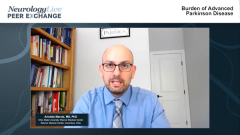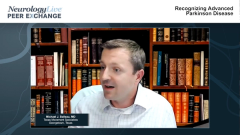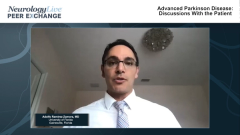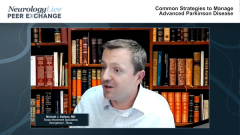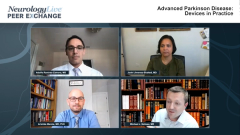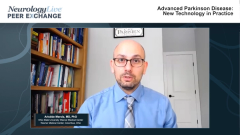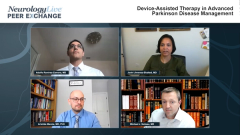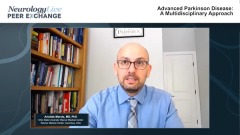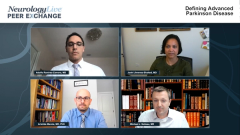
Defining Advanced Parkinson Disease
Experts in the field of Parkinson disease kick off a discussion about recognizing and managing the disease by defining advanced Parkinson disease.
Episodes in this series

Adolfo Ramirez-Zamora, MD: Hello, and welcome to this NeurologyLive® Peer Exchange titled, “Recognizing and Managing Advanced Parkinson Disease.” I’m Adolfo Ramirez-Zamora. I’m an associate professor of neurology and division chief of movement disorders at the Norman Fixel Institute for Neurological Diseases at the University of Florida, and I’m located in Gainesville. Today I’m fortunate to have an outstanding group of movement neurologists who are here to virtually discuss the management, treatment, and identification of advanced Parkinson disease. Joining me today in this virtual discussion is my colleague Dr Joohi Jimenez-Shahed, associate professor of neurology and medical director of movement disorders neuromodulation and brain circuit therapeutics, at the Icahn School of Medicine at Mount Sinai. Welcome.
Joohi Jimenez-Shahed, MD: Thank you.
Adolfo Ramirez-Zamora, MD: It’s great to have you here, Joohi. Also, we have Dr Aristide Merola, associate professor of neurology and director of the Madden Center for Parkinson’s Disease and Related Disorders at the Ohio State University, Wexner Medical Center, in Columbus. Thank you, Ari.
Aristide Merola, MD, PhD: Great to be here.
Adolfo Ramirez-Zamora, MD: Welcome. Finally, we have Dr Michael Souileau, a movement disorder specialist at Texas Movement Disorders Specialists in Georgetown; he also serves as a clinical assistant professor at Texas A&M [University] and adjunct faculty at the Dell Medical School. Thank you, Michael. Thank you so much for joining us today.
Michael J. Soileau, MD: Thanks for having me.
Adolfo Ramirez-Zamora, MD: It’s great to have this panel of experts, and we want to take advantage of this opportunity and time. We can get right into the discussion. The format for today is sharing your knowledge, talking about Parkinson disease and how we treat, how we care for these patients, and how we recognize some of the symptoms that are commonly seen in Parkinson disease as the disease advances. We’re going to focus primarily on defining and discussing the management of advanced Parkinson disease. To start the discussion, how do we define Parkinson disease? There has been much discussion about how to monitor and define disease progression, but there is no clear consensus. I think it will be really useful for anyone in the field to get a feel and a sense of, when we say somebody has advanced Parkinson disease, what do we mean by that? I can pass this question to Joohi. What do you think? What are your thoughts about this topic?
Joohi Jimenez-Shahed, MD: It’s an important question because I think it does come up quite frequently, Adolfo, and it’s hard because there isn’t a precise or an exact definition of advanced Parkinson disease. We know that Parkinson disease advances as time goes on. Symptoms tend to get worse. It is what we call a neurodegenerative process, so the process of cell death and dopaminergic cell loss continues over time. As a consequence of that, symptoms change, and a patient’s ability to respond to medications changes over time, and that’s what makes this disease so challenging in terms of its long-term management, because we have to constantly readjust our approach to how we address these symptoms that patients are talking about.
Some of the things that commonly happen in people as time goes on, we know when we first start medication, we can have almost a honeymoon period where symptoms are well controlled, but at some point that changes, and people will start noticing that the duration of effect of those medications gets shorter and shorter. Maybe when they take medications, the effect happens fairly quickly, but then it’s complicated by excessive involuntary movements that we call dyskinesias. Then the name of the game changes because we’re trying to adjust to optimize what we call the ON state, where patients are functioning well and able to perform their daily activities, and minimize the amounts of time they’re spending in what we call the OFF state, which is when the medication, usually the dopamine levels are falling, they’re experiencing a return of their Parkinson disease symptoms, they’re getting stiffer, slower, and it’s hard to conduct their daily routine. So, managing these types of fluctuations and these complications is what I think makes us experience these challenges in managing the condition because there are so many different options we have, but also you need to have a good understanding of what you’re dealing with in order to choose those appropriate therapeutic options.
Adolfo Ramirez-Zamora, MD: Absolutely. That’s great, that’s a really good point. I think some people have tried to define the progression, or define Parkinson disease as advanced, based on functional disability, regardless of the duration of their disease. I think for patients, sometimes there is this notion that the progression is linear, and it’s strictly related to disease duration, which may not be the case. As you mentioned, patients with early onset disease or young onset Parkinson disease, they tend to have motor fluctuations sometimes quite severe within a shorter timeline compared to other patients. Some people may define advanced Parkinson disease as when patients are having recurrent falls or dementia, and I think most of those definitions are somewhat appropriate. I would like to get Michael or Ari’s thoughts about that. Is that something you use in your clinic when you tell somebody that their disease is advanced?
Michael J. Soileau, MD: I get asked this question all the time by our patients. They say, “Dr Souileau, what stage am I, what stage am I?” And I explain that we really don’t pay as much attention to the “stage” in clinical practice. It’s very important for research but not so much in clinical practice because regardless of where they are in their disease process with their Parkinson disease, we are blessed that we have treatments these days for it. Like Joohi said, we have so many wonderful options. The key is to meet the patient where they are in their disease process. I say that I have patients with mild or early Parkinson disease who are doing not so great because they’re not optimized, and then I have patients who have had Parkinson disease for 20 years who are doing great because their medications and their therapy is optimized quite nicely. So, we have to try not to lump everybody into a large category, but instead individualize the treatment for these patients and meet them where they are. That’s what I would say.
Adolfo Ramirez-Zamora, MD: Thank you all for watching this NeurologyLive® Peer Exchange, and if you enjoyed the content, please subscribe to our e-newsletter to receive upcoming Peer Exchanges and other great content right in your inbox. Thank you so much.
Transcript Edited for Clarity
Newsletter
Keep your finger on the pulse of neurology—subscribe to NeurologyLive for expert interviews, new data, and breakthrough treatment updates.

